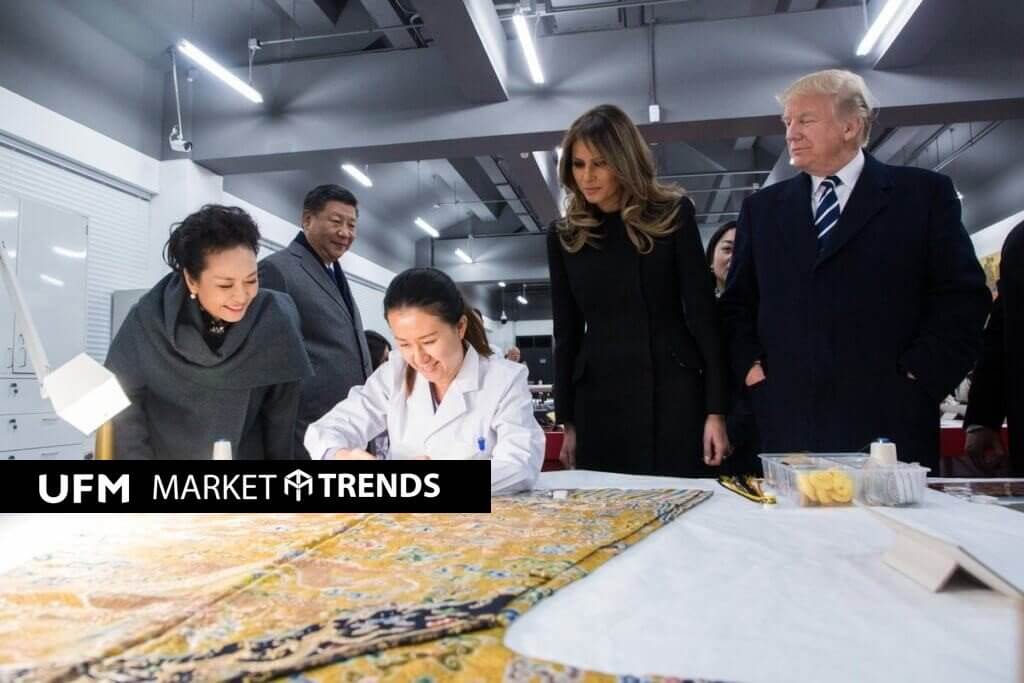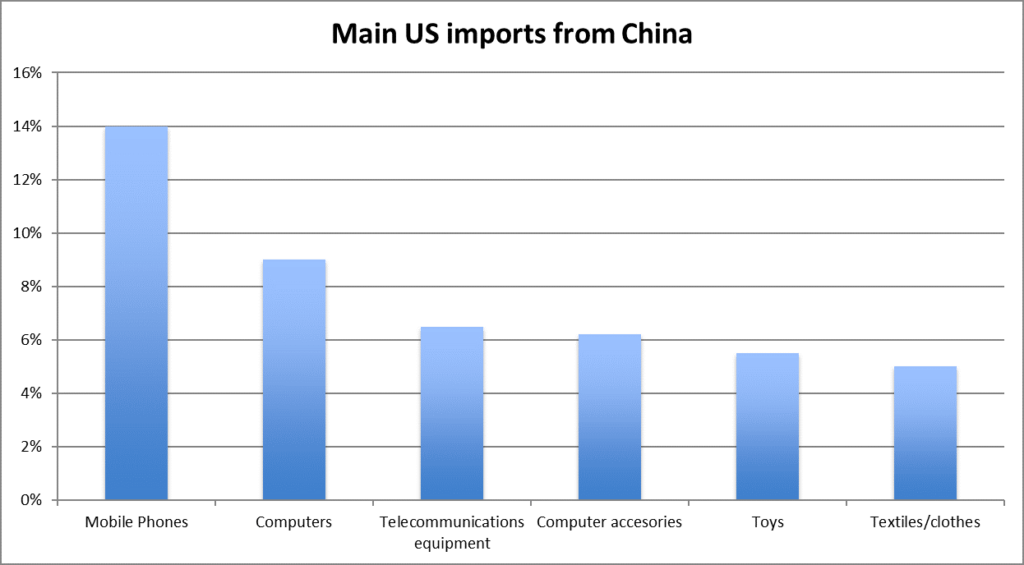Two Economic Fallacies in Trump’s Anti-Trade Speech

On March 22, Donald Trump announced a new series of tariffs on products coming from China. When Trump announced the measures, he assured everyone of two things: First, the move would “make the country stronger and richer.” Second, the trade deficit with China, supposedly amounting to $375 billion, was “the greatest deficit of any country in the history of the world.”
There are several problems with Trump’s logic. My colleague Olav Dirkmaat explained in a previous article why complaining about a negative trade balance does not make any sense, since it can be explained by a positive capital-account balance. Because his article explains this clearly, there is no need to address it here. However, there are two other fallacies I should point out.
Fallacy 1: Free trade is destroying American jobs
Since the publication of Adam Smith’s Wealth of Nations (1776) and the subsequent works of David Ricardo, economists have understood the benefits of trade. If Americans prefer to buy cellphones manufactured in China, it is because China has a comparative advantage in assembling phones and the United States is devoting its resources to producing other goods in which it has a comparative advantage.
More precisely, we should say the United States is producing goods and services. This is important because many services are nontradable (legal services, medical services, management, etc.). The nontradable-goods sector is not affected by free trade. If we examine the figures, we realize that the main imports from China to the United States are manufactured goods.

Source: United States Census Bureau
As a country, such as the United States, gets richer, the demand for tradable goods falls and the demand for nontradable goods (services) increases. This is logical: When an individual’s income increases, they can consume more foods or buy new clothes (tradable goods). However, how much more food or clothes? The amount is limited. Without a doubt, increases in income will generate more demand for other goods or services, many of which are nontradable.
Why is this relevant? Because Trump argues that free trade is destroying American jobs. There is no doubt that free trade does end some jobs in less productive sectors. But the tradable-goods sector increasingly counts less in the booming US economy. As Douglas Irwin shows in Free Trade under Fire, the tradable-goods sector accounted for 26 percent of US GDP in 1970, but by 2013 it had fallen to 16 percent. Further, in 1970 26 percent of the workforce worked in the tradable-goods sector. But by 2017, only 9.3 percent worked in that sector (data from the Bureau of Labor Statistics).
This shows that the claim that free trade is destroying American jobs is true for an increasingly small sector of the labor force. Because most of the work force is in the service sector, this argument loses its power. This is true even without taking account of the fact that jobs lost in this way free up resources for other productive activities and in turn generate new jobs. This argument challenges the main premise of Trump’s argument.
Fallacy 2: The trade deficit with China is the highest in history
According to him, the United States’ $375 billion trade deficit with China is scandalous. But the trade deficit is being overestimated. Why? Because of vertical specialization.
Vertical specialization refers to the circumstance in which the multiple inputs a good is composed of are produced in different places. Think about the iPhone. The iPhone is designed in California, and its memory chips and screen are manufactured in Japan, its processor in South Korea, its camera and GPS in Germany, and the WLAN transmitter in the United States. Finally, the iPhone is assembled in China. After it is assembled, the iPhone is exported to the United States.
According to Irwin, in 2009 the iPhone was imported from China at $179 per unit. However, the cost of manufacturing the parts of the iPhone in China was only $6.50, 3.6 percent of the value of the good. However, the trade balance registers the import according to the value in the country of origin. Therefore, the iPhones add $179 a unit to the trade deficit: $1.6 billion in 2009. This greatly exaggerates the trade deficit with China when we take into account the relatively low value added to the good in China, and underestimates the US trade deficit with Germany and Japan. Given this logic, we should reconsider the validity of Trump’s figure.
The worst effect of imposing barriers to imports is the damage to the export sector. However, this is the subject for a future article.
Get our free exclusive report on our unique methodology to predict recessions

Edgar Ortiz
Edgar Ortiz has a degree in Law from the Francisco Marroquín University. He holds a master in Austrian Economics at the Rey Juan Carlos University in Madrid. He is the executive director of the Center of Economic and Social Studies (CEES). He is a professor of economics at the Francisco Marroquín University, and he is also an analyst on issues related to the situation at Canal Antigua. He works as an associate lawyer at Estudio Jurídico Rivera.
Get our free exclusive report on our unique methodology to predict recessions



But this is intellectually dishonest, because it’s not about tariffs vs nothing, but about tariffs vs the income and inflation taxes. Free trade is not destroying American jobs, but income taxes and fiat money certainly are. A lot of countries are limiting the damage theses cause by taking money via imposing tariffs instead. Tariffs are also incredibly harmful to an economy, but not as harmful as income taxes and fiat money, because incomes taxes attack production, and fiat money attacks savings. While tariffs attack these too, they tend to attack more on the consumption and spending side, than on the production and savings side. It’s no wonder so many US jobs went offshore, while US savings are at record lows. These are precisely the thing the US government attacks us with the income taxes and the fiat money system. Of course, the idea situation is no income taxes, no fiat money, and no tariffs, but if I must choose one over the other, I would much rather have a job and savings, than low cost imports. It’s not a coincidence that Trump did massive tax reductions, then later turned around and put in tariffs. Of course it would have been better if the government cut government spending instead, but that seems politically impossible, so for now we have to deal with the ugly truth if the government must steal from me, would rather it be from what I consume instead of what I save and produce. I’m sure the transition is going to be hell, everything the government does is garbage anyhow.